“Crete rising out of the waves; Pasiphaë, cruelly fated to lust after a bull, and privily covered; the hybrid fruit of that monstrous union—the Minotaur, a memento of her unnatural love.” Virgil, Aeneid (trans. Day-Lewis)
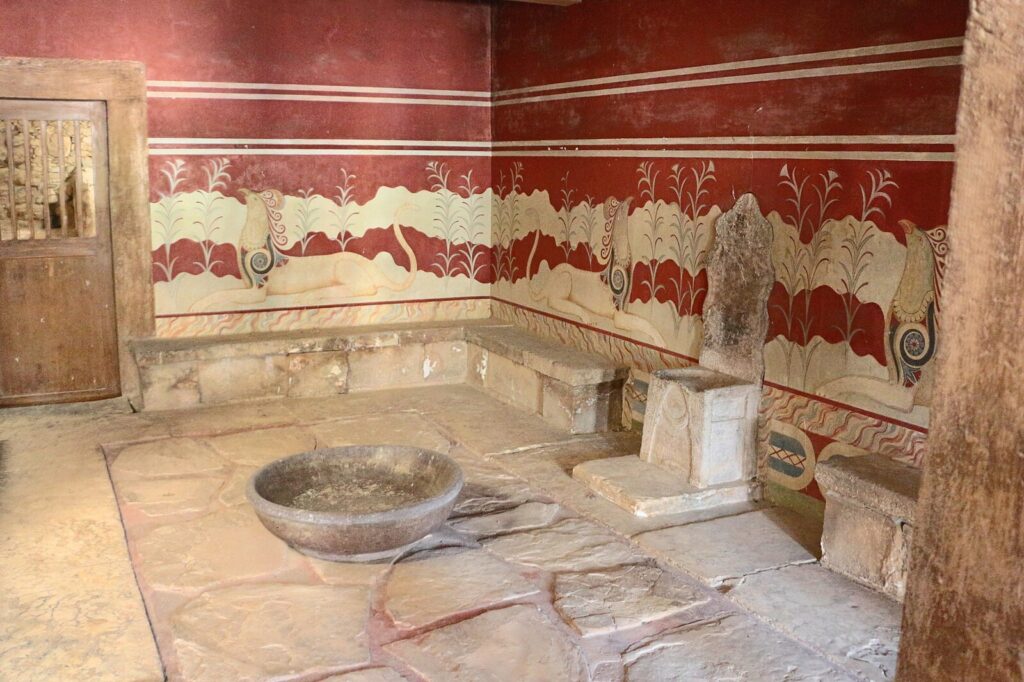
As all good legends must, the mythic cycle of Knossos takes place in a palace rife with treachery. Many of the stories that involve the Cretan King Minos and Queen Pasiphaë are those centered on Theseus, the legendary founder of Athens. Stories of Theseus often acted primarily as Athenian propaganda, and so don’t paint the King and Queen of Knossos in the most flattering light. Described in many sources as greedy and tyrannical, King Minos is the son of Zeus and Europa.1 His wife, Pasiphaë, is the immortal daughter of the sun god Helios, the sister of Circe and Aeëtes, and the aunt of Medea.2
The descendants of Helios are known for their skills in witchcraft. In Pseudo-Apollodorus’ 2nd century CE Bibliotheca, Pasiphaë utilizes that family knack for curses and potions—the same that Circe uses to turn Odysseus’ crew into pigs, or Medea to summon dragons—in order to take revenge on her cheating husband. When she learns that Minos has been unfaithful, she places a curse on him that causes him to ejaculate scorpions and poisonous spiders, painfully killing his lovers. Due to her immortality, the Queen herself is unharmed by this horrifying punishment.3
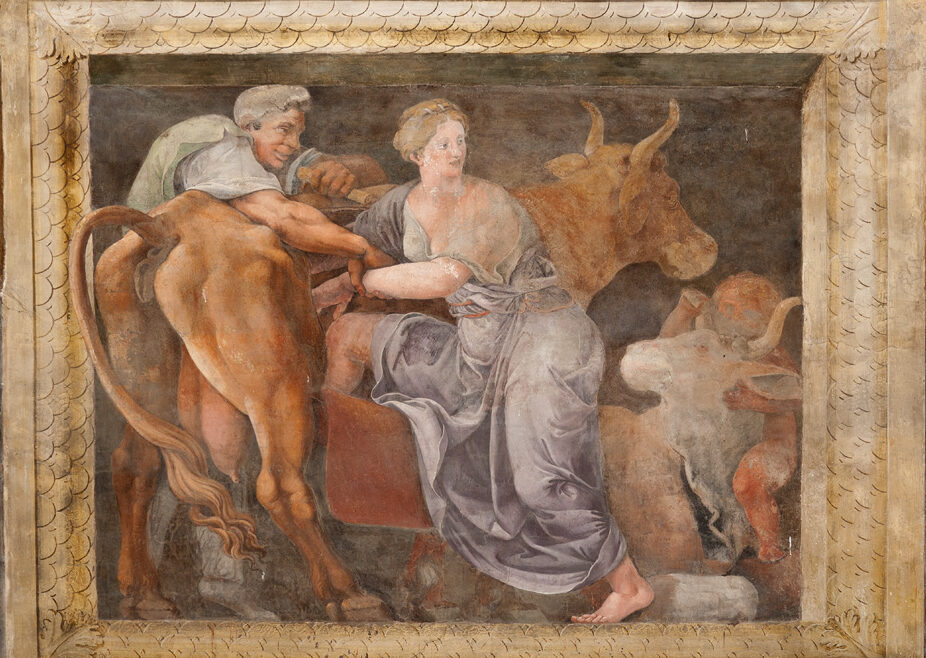
According to the Greek military commander Pausanius’ account of his travels, also in the 2nd century, Pasiphaë was also being worshiped as an oracular goddess, who might reveal visions of the future in one’s dreams. He describes a sanctuary and several bronze statues dedicated to her in the town of Thalami in the Peloponnese, where her sacred spring “flows with sweet water.” He makes specific mention of the fact that she is a foreign deity that has been adopted by the locals.4
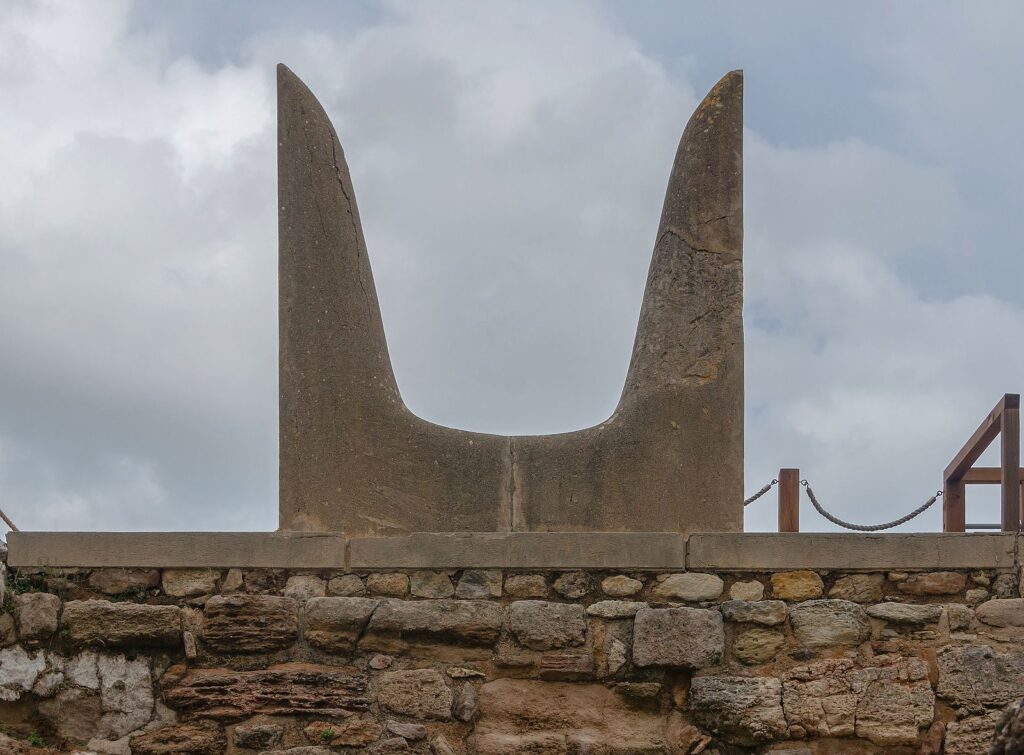
The myth of Pasiphaë that we are all most familiar with, of course, is her encounter with the sacred bull. Bull iconography on Crete traces all the way back to the Minoan era, where giant murals of athletic youths leaping over charging bulls decorated the walls, and the ubiquitous “horns of consecration” atop palaces and shrines cut through the city skyline.5 In the literary tradition, Zeus takes the form of a bull to abduct and rape Minos’ mother Europa, perhaps a notable inversion of Pasiphaë’s later bestiality.
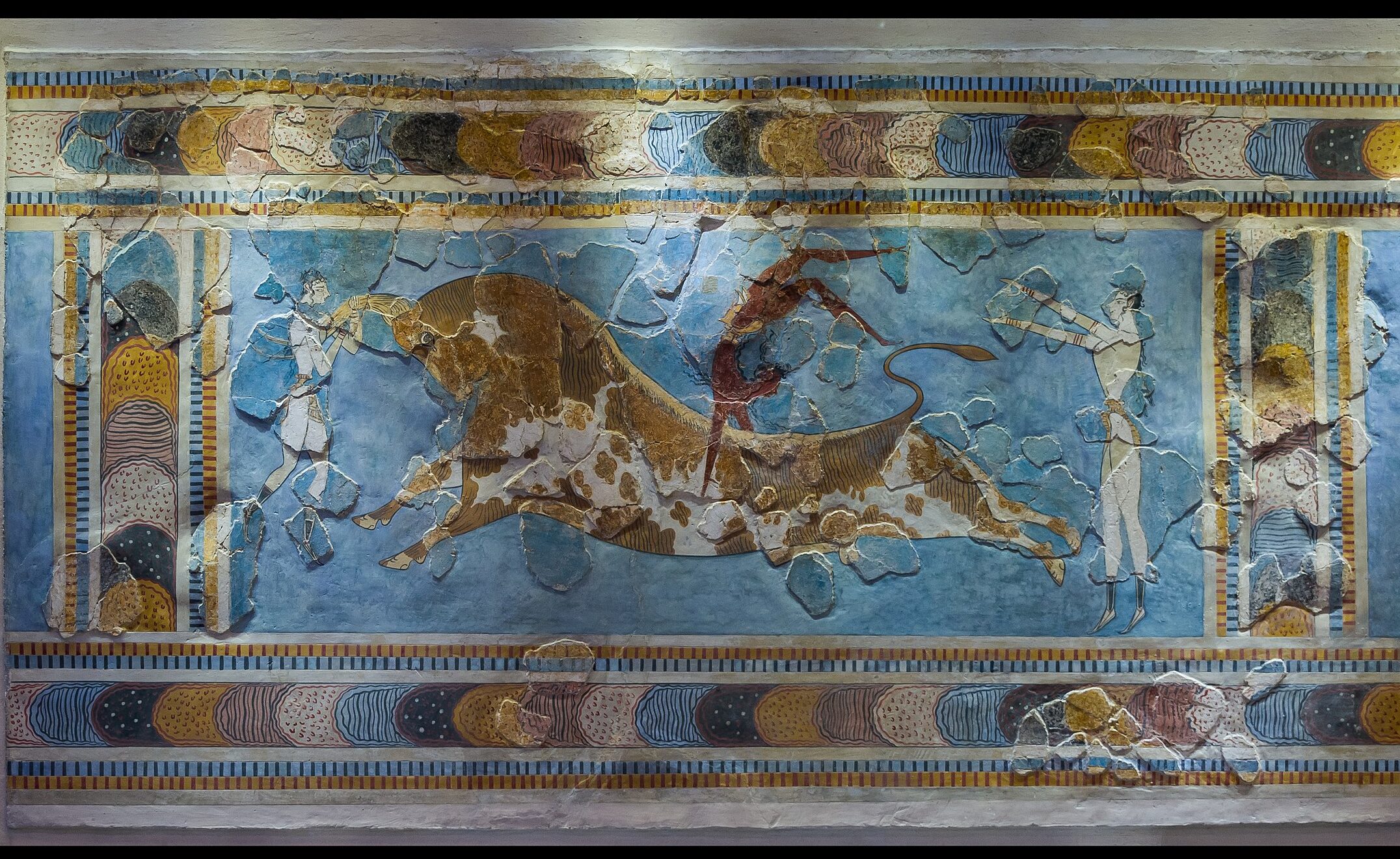
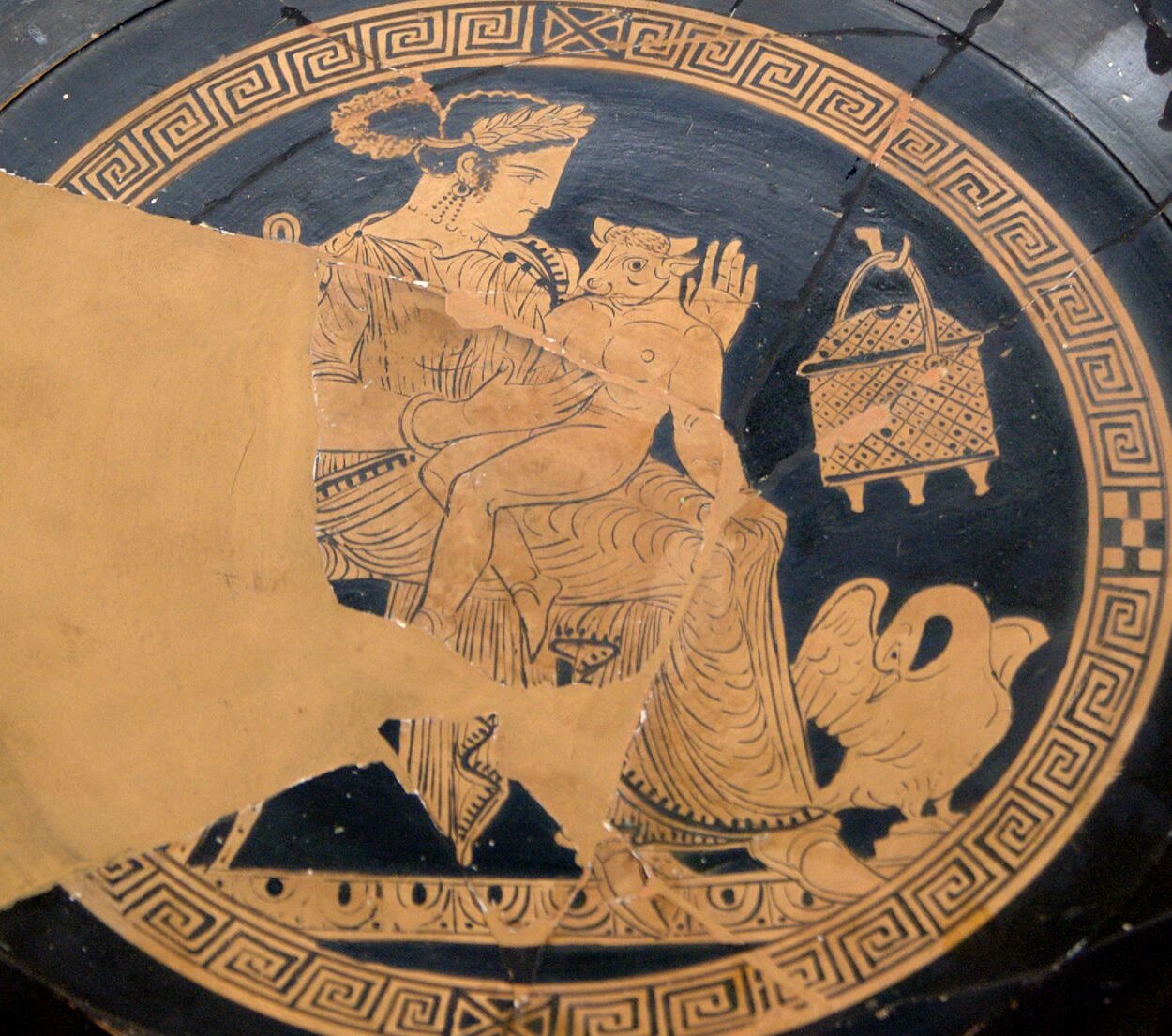
According to the Bibliotheca, the sacred bull is sent to Knossos by Poseidon after Minos implores the god for a sacrifice to ensure his rule. The sea god delivers, but Minos chooses to sacrifice another bull instead, and sends the divine gift to join the rest of his riffraff flock. Enraged, Poseidon inspires the Queen’s unnatural, all-consuming lust for the creature, and she enlists the master carpenter Daedalus to help her fulfill her desires.6 An early fragment by the 5th century BCE lyric poet Bacchylid states that the Queen informed Daedalus of her: “Unspeakable sickness… And ordered him to build a wooden cow, so that she might join her body to that of the mighty bull.”7

One of the earliest mentions of the bull-headed beast, given the name Asterion—meaning “the Starry One,” and his mother Pasiphaë “the Shining One”—comes from a fragment of Hesiod, also writing around the 5th century BCE. The fragment states that after giving herself over to the white bull, the Queen gave birth to a son that was: “A wonder to see: for he had the appearance of a man down to his feet, but a bull’s head grew on top.”8 Artistic depictions of the creature’s monstrous form abound throughout antiquity, ranging from the infant monster cradled in his mother’s lap, to the much more popular motif depicting the moment of his death at the hands of the hero Theseus. For a more modern look at the Minotaur, you can read a poem written from the monster’s perspective by OWU student Ronan Thompson here: https://sites.owu.edu/trident/2024/05/03/the-starry-one-a-modern-look-at-a-monster/

After his birth, Asterion is locked in the labyrinth constructed by Daedalus. The supply of Athenian youths that are fed to the creature (sources differ on the number and frequency of this sacrifice) are sent either as tribute after Athens loses a war against Crete, or as a repayment for the Athenian king’s slaying of Minos’ son, Androgenus.9 What’s interesting is that it is rarely, if ever, implied that Asterion is imprisoned due to any inherent violence or thirst for young Attic blood, but rather to hide the shame of the Queen’s interspecies adultery. Seneca the Younger wrote in his 1st century CE tragedy Phaedra: “She [Pasiphaë] did but pollute herself with her shameful lust, and yet her offspring by its two-shaped infamy displayed her crime… And by his fierce visage, the hybrid child made clear his mother’s guilt.” 10
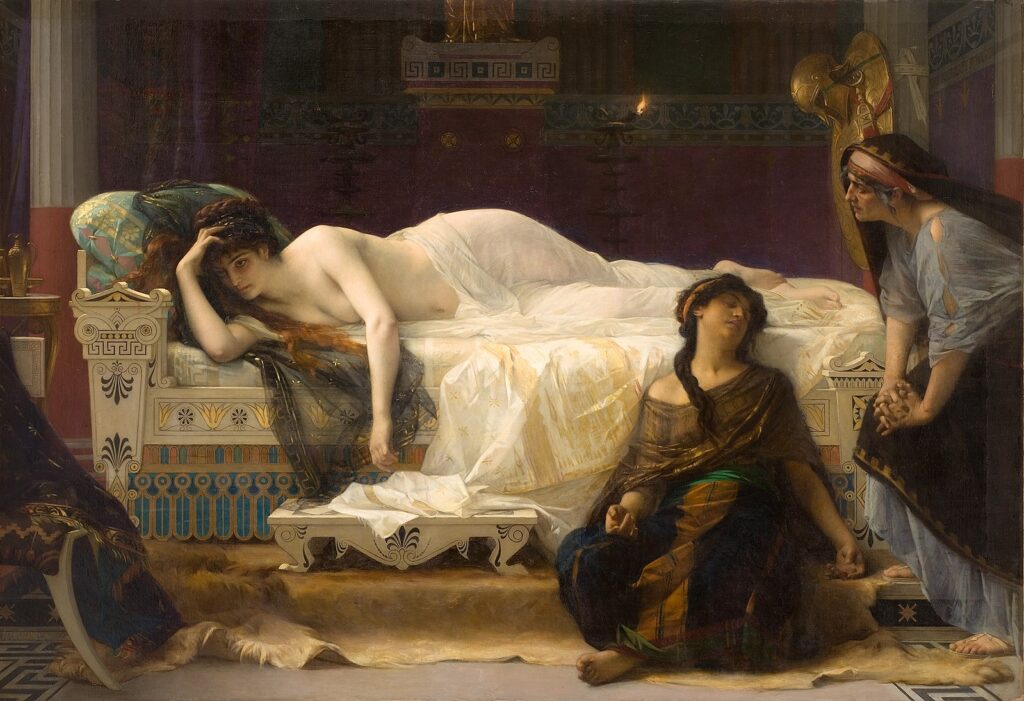
Queen Pasiphaë is at the heart of these myths, and much like those of Circe and Medea, the purpose of their telling was often to instill a fear of powerful and sexually liberated women. It should not go without mention that many of the sources for these myths were produced in Athens and, later, Rome, while Pasiphaë is a foreign ruler; or even an imported deity. This is very similar to the way Medea’s status as a foreign princess of Colchis mark her as an outsider and threat.11 The witches are representative of the threat posed by non-Athenian or non-Roman ideals of femininity and sexuality.
Ruth Padel, poet and author of mythology-inspired novel “Daughters of Crete,” writes in her article “Labyrinth of Desire: Cretan Myth and Us” that: “One hallmark of Cretan myth is the destructiveness of female sexuality seen through male eyes,” and often references the “ruinous female eroticism” that pervades the island’s mythology.12 Pasiphaë’s daughters, Phaedra and Ariadne, will go on to lead ruinous romances of their own. Phaedra falls victim to unnatural lust when she attempts to seduce her stepson Hippolytus, and commits suicide as a result of his rejection. Ariadne is abandoned after guiding a hero through his trials and falling head over heels for him; another family tradition, it seems.
- Strabo, Geography 10.4.8 (trans. Jones). 1st c. BCE ↩︎
- Apollonius, Argonautica 3.997 (trans. Rieu). 3rd c. BCE ↩︎
- Pseudo-Apollodorus, Bibliotheca 3.197-198 (trans. Aldrich). 2nd c. CE ↩︎
- Pausanias, Description of Greece 3. 26. 1 (trans. Jones). 2nd c. CE ↩︎
- McInerney, J. (2011). Bulls and Bull-Leaping in the Minoan World. Expedition Magazine. https://www.penn.museum/sites/expedition/bulls-and-bull-leaping-in-the-minoan-world/ ↩︎
- Pseudo-Apollodorus, Bibliotheca 3.8-11 (trans. Aldrich). 2nd c. CE ↩︎
- Bacchylides, Fragment 26 6-10 (trans. Campbell). 5th c. BCE ↩︎
- Hesiod, Fragment 145 13-17. 5th c. BCE ↩︎
- Diodorus Siculus, Library of History, 4.61.4 (trans. Oldfather). 1st c. BCE ↩︎
- Seneca, Phaedra, (trans. Miller). 1st c. CE. This is also implied to be the reason for the Minotaur’s imprisonment in Ovid, Metamorphoses 8.130. 1st c. CE ↩︎
- Stover, Tim. “Confronting Medea: Genre, Gender, and Allusion in the Argonautica of Valerius Flaccus.” Classical Philology 98, no. 2 (2003): 123–47. https://doi.org/10.1086/381368. ↩︎
- Padel, Ruth. “Labyrinth of Desire: Cretan Myth in Us.” Arion: A Journal of Humanities and the Classics 4, no. 2 (1996): 76–87. http://www.jstor.org/stable/20163616. ↩︎
Featured Image: Pasiphae mosaic from the House of Poseidon photo by Dosseman and licensed under the Creative Commons Attribution-Share Alike 4.0 International license.
Images:
Throne Room of Minos photo by Przemek Pietrak and licensed under the Creative Commons Attribution-Share Alike 3.0 Unported license.
Pasiphae, Giulio Romano, c. 1528. This work is in the public domain.
Horns of Consecration photograph by Jebulon, this work is in the public domain.
The Bull Leapers fresco photo by Jebulon, this work is in the public domain.
Pasiphae and Minotaur kylix photograph courtesy of BnF Museum, Paris, France. This work is in the public domain.
Pasiphae med Minotaur, Marie Jeanne Clemens, c. 1755-1791, courtesy of the Statens Museum for Kunst, Copenhagen. This work is in the public domain.
Pasiphaé, Gustave Moreau, c. 1880, this work is in the public domain.
Phaedra, Alexander Cabanel, 1880, courtesy of the Fabre Museum, Montpelier, France. This work is in the public domain.